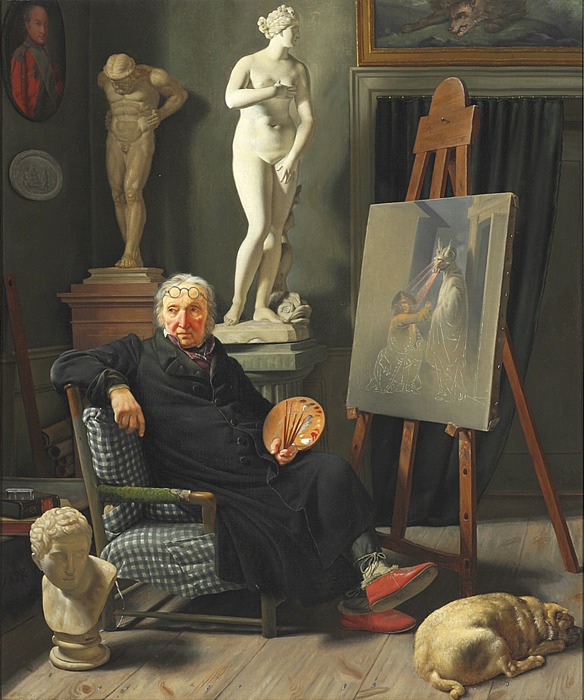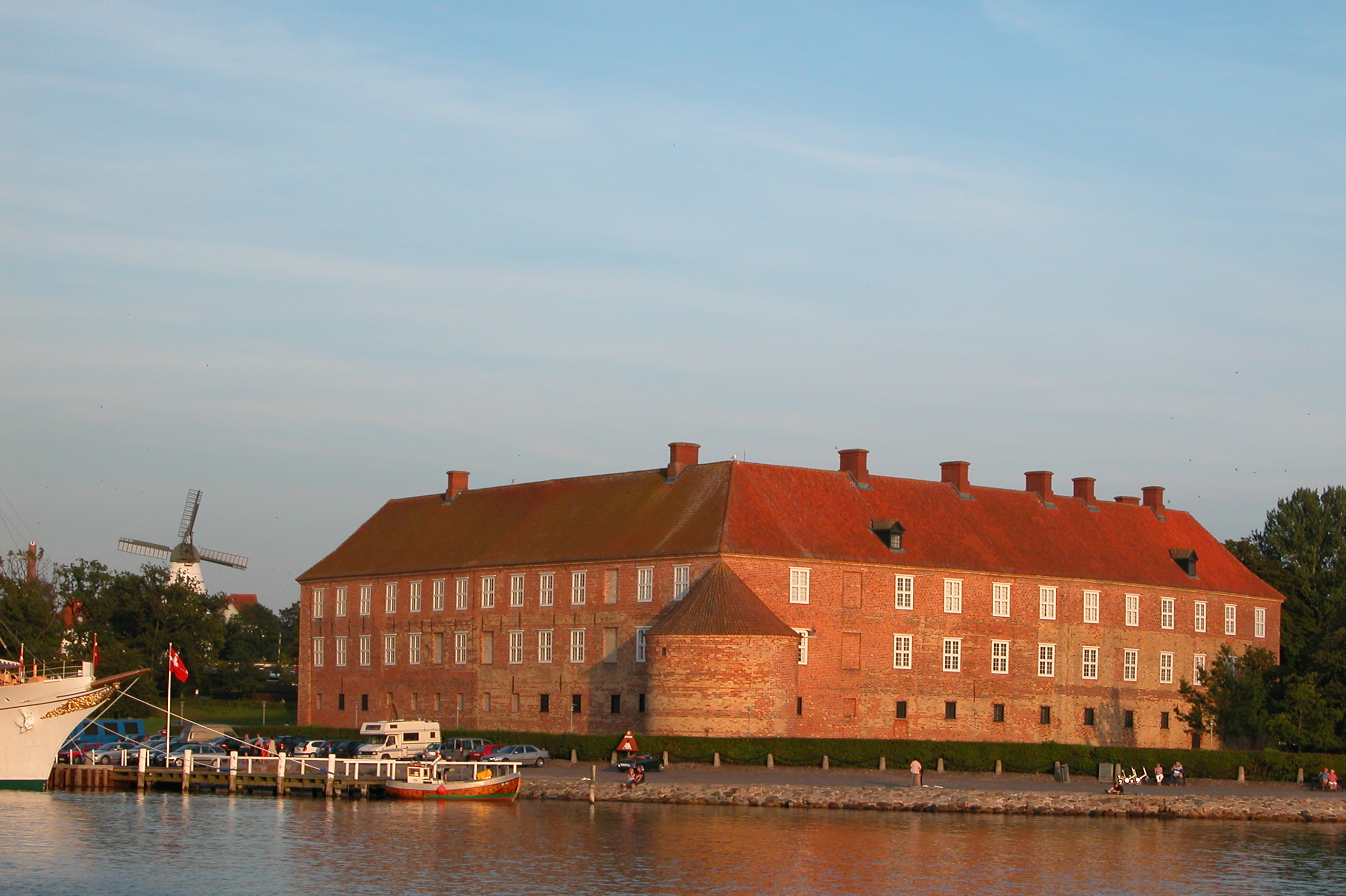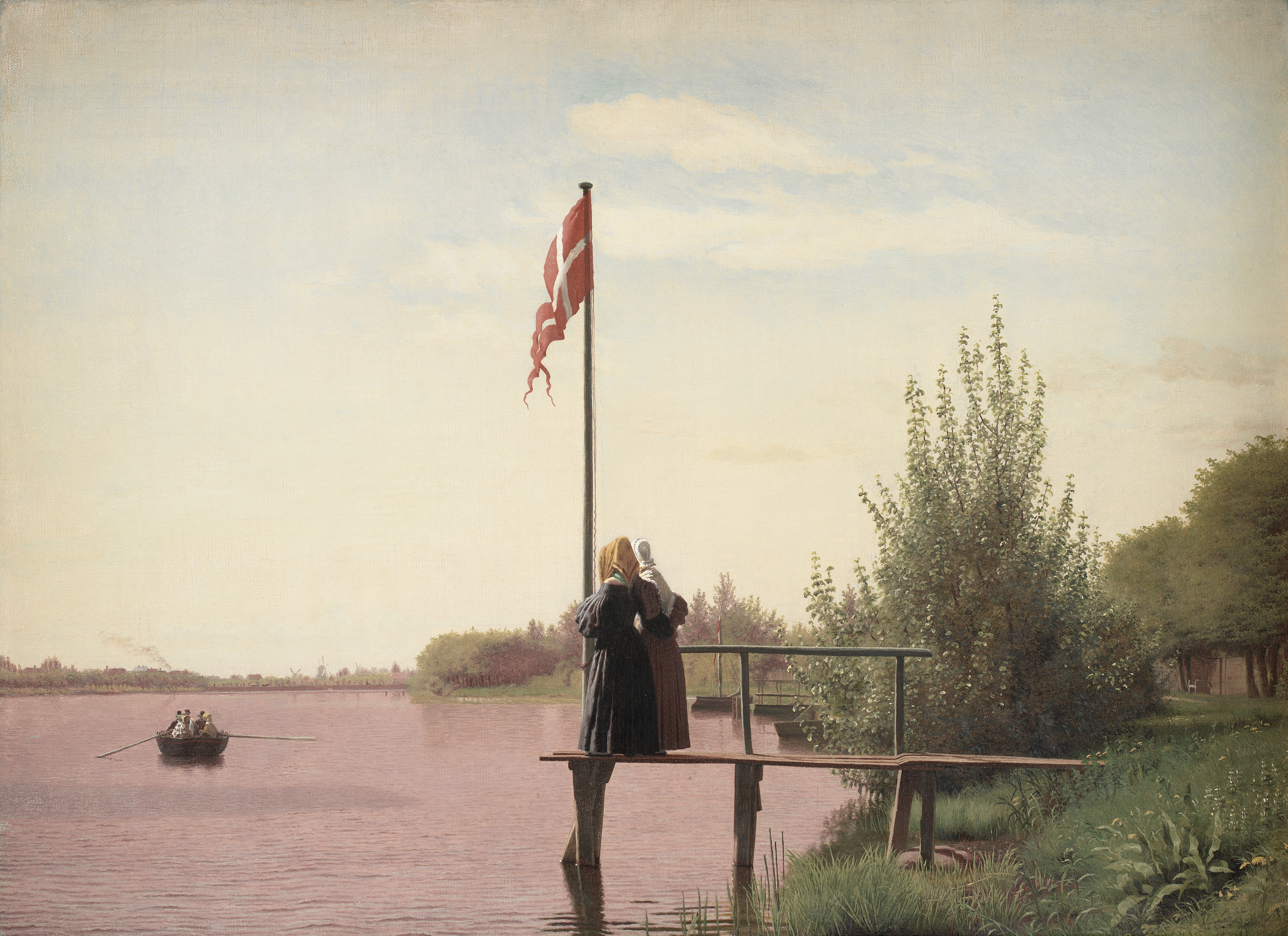|
Christian August Lorentzen
Christian August Lorentzen (10 August 1749 – 8 May 1828) was a Danish painter. Early life and education Christian August Lorentzen was born in Sønderborg, Denmark. He was the son of Hans Peter Lorentzen and Maria Christina Hansdatter. His father was a watchmaker. He arrived in Copenhagen around 1771 where he frequented the Royal Academy of Fine Arts but it is unclear whether he received formal training.Thomas Kappel. After arriving in Copenhagen, he was soon used as a portrait painter. From 1779 to 1782 he went abroad to develop his skills, visiting the Netherlands, Antwerp and Paris where he copied old masters. In 1792 he traveled to Norway to paint prospects. Career After returning home in 1782, he became a more versatile artist. In a number of painting, such as ''Slaget på Reden'' (''Battle of Copenhagen''. 1801) at Danish Museum of National History and ''Den rædsomste nat'' (''The Awful Night''. 1807) at Danish National Gallery, he documented key events from the ... [...More Info...] [...Related Items...] OR: [Wikipedia] [Google] [Baidu] |
Sønderborg
(; german: Sonderburg ) is a Danish town in the Region of Southern Denmark. It is the main town and the administrative seat of Sønderborg Municipality (Kommune). The town has a population of 27,766 (1 January 2022),BY3: Population 1. January by urban areas, area and population density The Mobile Statbank from Statistics Denmark in a municipality of 73,711. In recent times, Sønderborg is a center for trade, tourism, industry, and education in the region of . The town is the headquarters for several industrial companies. Sønderburg joined the UN ... [...More Info...] [...Related Items...] OR: [Wikipedia] [Google] [Baidu] |
Slotsholmen
Slotsholmen (English: The Castle Islet) is an island in the harbour of Copenhagen, Denmark, and part of Copenhagen Inner City. The name is taken from the successive castles and palaces located on the island since Bishop Absalon constructed the city's first castle on the island in 1167 at the site where Christiansborg Palace lies today. Recognised as the centre of the Government of Denmark since the Middle Ages, the island is sometimes referred to as 'the Island of Power', and is lined with central government institutions and ministries; the name ''Slotsholmen'' is thus also frequently used as a metonym for overall Danish governmental administration. The island is dominated by the vast Christiansborg Palace which houses the Danish Parliament, the Supreme Court of Denmark, the Prime Minister's Office and the State Rooms of the Queen. Also located on the island are the most important ministries, the Danish National Archives, the Royal Danish Library, several museums and the histor ... [...More Info...] [...Related Items...] OR: [Wikipedia] [Google] [Baidu] |
Directors Of The Royal Danish Academy Of Fine Arts
Director may refer to: Literature * ''Director'' (magazine), a British magazine * ''The Director'' (novel), a 1971 novel by Henry Denker * ''The Director'' (play), a 2000 play by Nancy Hasty Music * Director (band), an Irish rock band * ''Director'' (Avant album) (2006) * ''Director'' (Yonatan Gat album) Occupations and positions Arts and design * Animation director * Artistic director * Creative director * Design director * Film director * Music director * Music video director * Sports director * Television director * Theatre director Positions in other fields * Director (business), a senior level management position * Director (colonial), head of chartered company's colonial administration in a territory * Director (education), head of a university or other educational body * Company director * Cruise director * Executive director * Finance director or chief financial officer * Funeral director * Managing director * Non-executive director * Technical director * Tournam ... [...More Info...] [...Related Items...] OR: [Wikipedia] [Google] [Baidu] |
1828 Deaths
Eighteen or 18 may refer to: * 18 (number), the natural number following 17 and preceding 19 * one of the years 18 BC, AD 18, 1918, 2018 Film, television and entertainment * ''18'' (film), a 1993 Taiwanese experimental film based on the short story ''God's Dice'' * ''Eighteen'' (film), a 2005 Canadian dramatic feature film * 18 (British Board of Film Classification), a film rating in the United Kingdom, also used in Ireland by the Irish Film Classification Office * 18 (''Dragon Ball''), a character in the ''Dragon Ball'' franchise * "Eighteen", a 2006 episode of the animated television series ''12 oz. Mouse'' Music Albums * ''18'' (Moby album), 2002 * ''18'' (Nana Kitade album), 2005 * '' 18...'', 2009 debut album by G.E.M. Songs * "18" (5 Seconds of Summer song), from their 2014 eponymous debut album * "18" (One Direction song), from their 2014 studio album ''Four'' * "18", by Anarbor from their 2013 studio album '' Burnout'' * "I'm Eighteen", by Alice Cooper common ... [...More Info...] [...Related Items...] OR: [Wikipedia] [Google] [Baidu] |
1749 Births
Events January–March * January 3 ** Benning Wentworth issues the first of the New Hampshire Grants, leading to the establishment of Vermont. ** The first issue of ''Berlingske'', Denmark's oldest continually operating newspaper, is published. * January 21 – The Teatro Filarmonico, the main opera theater in Verona, Italy, is destroyed by fire. It is rebuilt in 1754. * February – The second part of John Cleland's erotic novel ''Fanny Hill'' (''Memoirs of a Woman of Pleasure'') is published in London. The author is released from debtors' prison in March. * February 28 – Henry Fielding's comic novel ''The History of Tom Jones, a Foundling'' is published in London. Also this year, Fielding becomes magistrate at Bow Street, and first enlists the help of the Bow Street Runners, an early police force (eight men at first). * March 6 – A "corpse riot" breaks out in Glasgow after a body disappears from a churchyard in the Gorbals district. Suspicion fa ... [...More Info...] [...Related Items...] OR: [Wikipedia] [Google] [Baidu] |
19th-century Danish Painters
The 19th (nineteenth) century began on 1 January 1801 ( MDCCCI), and ended on 31 December 1900 ( MCM). The 19th century was the ninth century of the 2nd millennium. The 19th century was characterized by vast social upheaval. Slavery was abolished in much of Europe and the Americas. The First Industrial Revolution, though it began in the late 18th century, expanding beyond its British homeland for the first time during this century, particularly remaking the economies and societies of the Low Countries, the Rhineland, Northern Italy, and the Northeastern United States. A few decades later, the Second Industrial Revolution led to ever more massive urbanization and much higher levels of productivity, profit, and prosperity, a pattern that continued into the 20th century. The Islamic gunpowder empires fell into decline and European imperialism brought much of South Asia, Southeast Asia, and almost all of Africa under colonial rule. It was also marked by the collapse of the large S ... [...More Info...] [...Related Items...] OR: [Wikipedia] [Google] [Baidu] |
Danish Male Painters
Danish may refer to: * Something of, from, or related to the country of Denmark People * A national or citizen of Denmark, also called a "Dane," see Demographics of Denmark * Culture of Denmark * Danish people or Danes, people with a Danish ancestral or ethnic identity * A member of the Danes, a Germanic tribe * Danish (name), a male given name and surname Language * Danish language, a North Germanic language used mostly in Denmark and Northern Germany * Danish tongue or Old Norse, the parent language of all North Germanic languages Food * Danish cuisine * Danish pastry, often simply called a "Danish" See also * Dane (other) * * Gdańsk * List of Danes * Languages of Denmark The Kingdom of Denmark has only one official language, Danish, the national language of the Danish people, but there are several minority languages spoken, namely Faroese, German, and Greenlandic. A large majority (about 86%) of Danes also s ... {{disambiguation Language and nation ... [...More Info...] [...Related Items...] OR: [Wikipedia] [Google] [Baidu] |
18th-century Male Artists
The 18th century lasted from January 1, 1701 ( MDCCI) to December 31, 1800 ( MDCCC). During the 18th century, elements of Enlightenment thinking culminated in the American, French, and Haitian Revolutions. During the century, slave trading and human trafficking expanded across the shores of the Atlantic, while declining in Russia, China, and Korea. Revolutions began to challenge the legitimacy of monarchical and aristocratic power structures, including the structures and beliefs that supported slavery. The Industrial Revolution began during mid-century, leading to radical changes in human society and the environment. Western historians have occasionally defined the 18th century otherwise for the purposes of their work. For example, the "short" 18th century may be defined as 1715–1789, denoting the period of time between the death of Louis XIV of France and the start of the French Revolution, with an emphasis on directly interconnected events. To historians who expand t ... [...More Info...] [...Related Items...] OR: [Wikipedia] [Google] [Baidu] |
18th-century Danish Painters
The 18th century lasted from January 1, 1701 ( MDCCI) to December 31, 1800 ( MDCCC). During the 18th century, elements of Enlightenment thinking culminated in the American, French, and Haitian Revolutions. During the century, slave trading and human trafficking expanded across the shores of the Atlantic, while declining in Russia, China, and Korea. Revolutions began to challenge the legitimacy of monarchical and aristocratic power structures, including the structures and beliefs that supported slavery. The Industrial Revolution began during mid-century, leading to radical changes in human society and the environment. Western historians have occasionally defined the 18th century otherwise for the purposes of their work. For example, the "short" 18th century may be defined as 1715–1789, denoting the period of time between the death of Louis XIV of France and the start of the French Revolution, with an emphasis on directly interconnected events. To historians who expan ... [...More Info...] [...Related Items...] OR: [Wikipedia] [Google] [Baidu] |
Christian Frederik Hansen
Christian Frederik Hansen (29 February 1756 – 10 July 1845), known as C. F. Hansen, was the leading Danish architect between the late 18th century and the mid 19th century, and on account of his position at the Royal Danish Academy of Art (''Det Kongelige Danske Kunstakademi'') the most powerful person in artistic circles for many years. He was known as "Denmark’s Palladio" on account of the architectural style he promoted. His buildings are known for their simplicity, strength and scale. Early life and education He was born in Copenhagen into the poor household of shoemaker and leatherworker Matthias Hansen and his wife Anna Marie, who had been nursemaid for Prince Christian VII. He was the youngest son in the family, and there was not much money to spend on his upbringing. His parents sent him to train in business, but he wanted to draw. His mother used her connections at the royal court, and found some influential people who interested themselves in his education and ... [...More Info...] [...Related Items...] OR: [Wikipedia] [Google] [Baidu] |
Nikolaj Abraham Abildgaard
Nicolai Abraham Abildgaard (11 September 1743 – 4 June 1809) was a Danish neoclassical and royal history painter, sculptor, architect, and professor of painting, mythology, and anatomy at the New Royal Danish Academy of Art in Copenhagen, Denmark. Many of his works were in the royal Christiansborg Palace (some destroyed by fire 1794), Fredensborg Palace, and Levetzau Palace at Amalienborg. Biography Nicolai Abraham Abildgaard was born in Copenhagen, Denmark, as the son of Anne Margrethe (née Bastholm) and Søren Abildgaard, a noted antiquarian draughtsman. Abildgaard was trained by a painting master before he joined the Royal Danish Academy of Art (''Det Kongelige Danske Kunstakademi'') in Copenhagen, where he studied under the guidance of Johan Edvard Mandelberg and Johannes Wiedewelt. He won a series of medallions at the Academy for his brilliance from 1764 to 1767. The Large Gold Medallion from the Academy won in 1767 included a travel stipend, which he waited f ... [...More Info...] [...Related Items...] OR: [Wikipedia] [Google] [Baidu] |
Art Of Denmark
Danish art is the visual arts produced in Denmark or by Danish artists. It goes back thousands of years with significant artifacts from the 2nd millennium BC, such as the Trundholm sun chariot. For many early periods, it is usually considered as part of the wider Nordic art of Scandinavia. Art from what is today Denmark forms part of the art of the Nordic Bronze Age, and then Norse art, Norse and Viking art. Danish medieval painting is almost entirely known from church frescos in Denmark, church frescos such as those from the 16th-century artist known as the Elmelunde Master. The Reformation greatly disrupted Danish artistic traditions, and left the existing body of painters and sculptors without large markets. The requirements of the court and aristocracy were mainly for portraits, usually by imported artists, and it was not until the 18th century that large numbers of Danes were trained in contemporary styles. For an extended period of time thereafter art in Denmark either ... [...More Info...] [...Related Items...] OR: [Wikipedia] [Google] [Baidu] |







